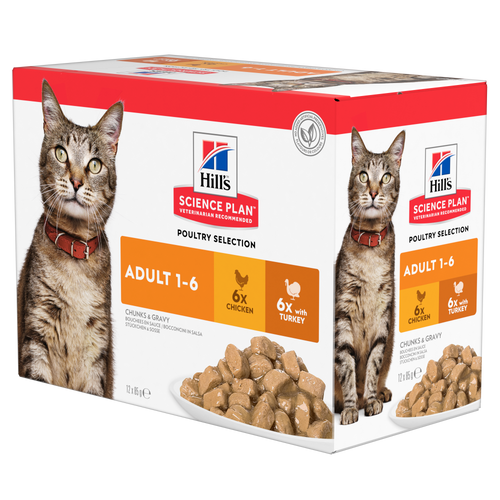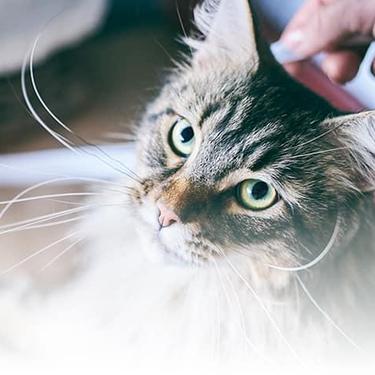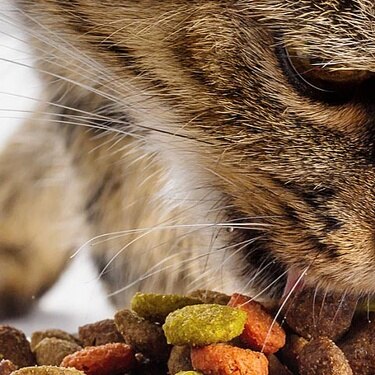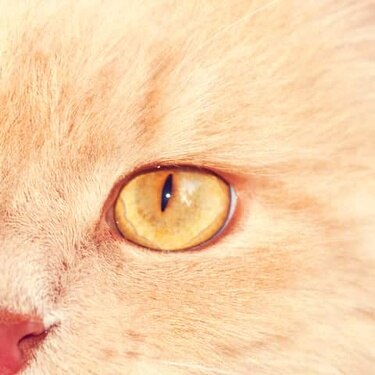
-
Find the right food for your petTake this quiz to see which food may be the best for your furry friend.Find the right food for your petTake this quiz to see which food may be the best for your furry friend.Featured products
 Adult Wet Dog Food with Beef
Adult Wet Dog Food with BeefHill's Science Plan Adult Multipack Wet Dog Food with Chicken, Beef & Turkey are complete premium pet foods for adult dogs from 1 year. Your dog will love these deliciously smooth and savoury minced loaves, formulated for balanced nutrition and overall health.
Shop Now Mature Adult Dog Food
Mature Adult Dog FoodHill's Science Plan Mature Adult Multipack Wet Dog Food with Chicken & Beef are complete premium pet foods for mature adult dogs from 7 years. Your dog will love these deliciously smooth and savoury minced loaves, formulated to deliver the appropriate amount of energy to support the needs of adult dogs.
Shop Now Puppy Food
Puppy FoodHill's Science Plan Puppy Multipack Wet Dog Food with Chicken & Beef are complete premium pet foods for growing puppies from weaning until 1 year old and for pregnant and nursing dogs. Your puppy will love these deliciously smooth and savoury minced loaves, formulated for balanced nutrition and overall health.
Shop NowFeatured products Light Adult Multipack Wet Cat Food with Chicken & Ocean Fish
Light Adult Multipack Wet Cat Food with Chicken & Ocean FishTender chicken chunks in gravy for cats, with L-carnitine and fewer calories for ideal weight management. Packed with high-quality protein, omega-6s, and vitamin E for shiny fur and healthy skin.
Shop Now Mature Adult Wet Cat Food with Chicken
Mature Adult Wet Cat Food with Chicken
Tender chicken chunks in gravy for mature adult cats. Made with easy-to-digest ingredients, high-quality protein for lean muscle maintenance and antioxidant vitamins C+E for optimal health.
Shop Now Adult Multipack Wet Cat Food with Beef, Ocean Fish & Chicken
Adult Multipack Wet Cat Food with Beef, Ocean Fish & ChickenTender chunks in gravy for cats, with high-quality protein to maintain lean muscle. With vitamin E and omega-3s & -6s for healthy skin and balanced minerals to support healthy vital organs.
Shop Now -
Dog
- Dog Tips & Articles
-
Health Category
- Weight
- Food & Environmental Sensitivities
- Urinary
- Digestive
- Joint
- Kidney
-
Life Stage
- Puppy Nutrition
- Adult Nutrition
- Senior Nutrition
Cat- Cat Tips & Articles
-
Health Category
- Weight
- Skin & Food Sensitivities
- Urinary
- Digestive
- Kidney
-
Life Stage
- Kitten Nutrition
- Adult Nutrition
Featured articles Show some love with wet foods: a great choice for pets with health issues
Show some love with wet foods: a great choice for pets with health issuesShow some love with wet foods: a great choice for pets with health issues.
Read More The Right Diet For Your Pet
The Right Diet For Your PetIn people, the right diet is very important. If you are eating the wrong way for your metabolism, activity level, age and lifestyle you could end up with health issues.
Read More The Incredible Science Behind Your Pet's Microbiome
The Incredible Science Behind Your Pet's MicrobiomeLearn what your pet's microbiome is, how it contributes to your pet's gut and overall health, and why nutrition is important in maintaining healthy microbiomes.
Read More -


One of the many great things about cats as pets is their fastidious, clean nature. Even if they don’t go outside to go to the toilet, they are really good at keeping it clean indoors. So, it can be very frustrating, not to mention messy, when this habit goes awry and they start pooing outside of their litter tray. Sometimes this may be just outside and they get caught on some newspaper, but sometimes they start doing it all over the house and often in the places you’d least like them to. In this article we’ll look at the most common reasons it might start happening and what you can do about it if it does happen.
You’ve changed nothing about the tray, litter or location
If your litter tray has always been in the same place, you’ve always used the same litter, and your cat has consistently used it, then a change in behaviour may be more likely due to an illness. Examples of this would be:
- Diarrhoea or another gastrointestinal disease, such as inflammatory bowel disease (IBD). It may simply be that your cat is not making it to the tray in time when the urge to poo happens. Usually you’ll notice the poo is soft or runny. There may be mucus or blood, too. In this case, you should see your vet to find out the cause.
- Arthritis. As cats age, they tend to get stiff joints, especially in the hips and shoulders, due to a lifetime of jumping and climbing. As this progresses, your cat may have difficulty or pain getting into the litter tray. This is particularly true of high-sided trays. Try to notice if your cat is also struggling or reluctant to jump on or off furniture. This is also time to see your vet. Chronic pain is no fun and cats can be subtle creatures when it comes to showing signs of illness or pain.


Tasty Tips
Something has changed with the tray or the home environment
These are by far the most common causes of cats not using a litter tray when they are normally well-disciplined and clean.
- Location. It’s convenient for us as owners to put litter trays out of the way, where the smell won’t bother us. This often means they are in the laundry area or a similar place, and all too often near the cat’s food and water. Imagine if it was us. Do you want to go to the toilet in your dining room? Do you want noise and light and people walking by when you are trying to go to the toilet? Litter trays should be in quiet, secluded places, well away from their food and water.
- Number of trays. Ideally you should have one more litter tray than you have cats, and the trays should be in different rooms. Cats are easily bullied by other cats in the house, and it may be that one of your cats can’t get access to the tray. They will feel forced to go elsewhere.
- Cleanliness. You may simply need to change the litter more frequently. When we go to a public toilet and every stall is filthy, we don’t want to sit down. Cats have got to walk in there and put their clean paws in it. It’s understandable if they go under your nice clean bed instead!
- Stress. Cats are very sensitive creatures and easily stressed. You may have visitors or a new baby, or you might have started packing to go on holiday and your cat knows a cattery visit is coming. You may have got a new cat or a dog. Any of these seemingly small things are enough to unsettle a cat and get them running for solitude, including to go to the toilet.
- Type of litter. Certain cats simply don’t find some types of litter comfortable to dig around in. Try some different types.
If you see that something has obviously changed and the poo looks normal, you may well be able to reverse the change and get a quick result yourself. Order will be restored! If in any doubt, but particularly if you suspect illness, pain or stress, then a prompt visit to your vet is essential. With any physical or mental issue, the sooner you get to the bottom of it (pardon the pun!) the better.
Reviewed by Dr. Hein Meyer, DVM, PhD, Dipl-ECVIM-CA


One of our staff authors prepared this article for you
Related products


Tender chunks in gravy for cats, with high-quality protein to maintain lean muscle. With vitamin E and omega-3s & -6s for healthy skin and balanced minerals to support healthy vital organs.

Tender chicken chunks in gravy for mature adult cats. Made with easy-to-digest ingredients, high-quality protein for lean muscle maintenance and antioxidant vitamins C+E for optimal health.

Tender chicken chunks in gravy for cats, with L-carnitine and fewer calories for ideal weight management. Packed with high-quality protein, omega-6s, and vitamin E for shiny fur and healthy skin.
Related articles

Learn how to make homemade cat treats that are healthy for your pet with this recipe from Hills Pet Nutrition.

From essential vitamins & minerals to different types of meat, learn what to look for when choosing the best cat food for your feline.

There are three common ways to feed a cat. Each way has its advantages and disadvantages.

Chocolate is known to be poisonous for dogs, but it can also be toxic for cats. Learn why chocolate is bad for cats & what to do if she's eaten it.

Put your cat on a diet without them knowing
Our low calorie formula helps you control your cat's weight. It's packed with high-quality protein for building lean muscles, and made with purposeful ingredients for a flavourful, nutritious meal. Clinically proven antioxidants, Vitamin C+E, help promote a healthy immune system.
Put your cat on a diet without them knowing
Our low calorie formula helps you control your cat's weight. It's packed with high-quality protein for building lean muscles, and made with purposeful ingredients for a flavourful, nutritious meal. Clinically proven antioxidants, Vitamin C+E, help promote a healthy immune system.

